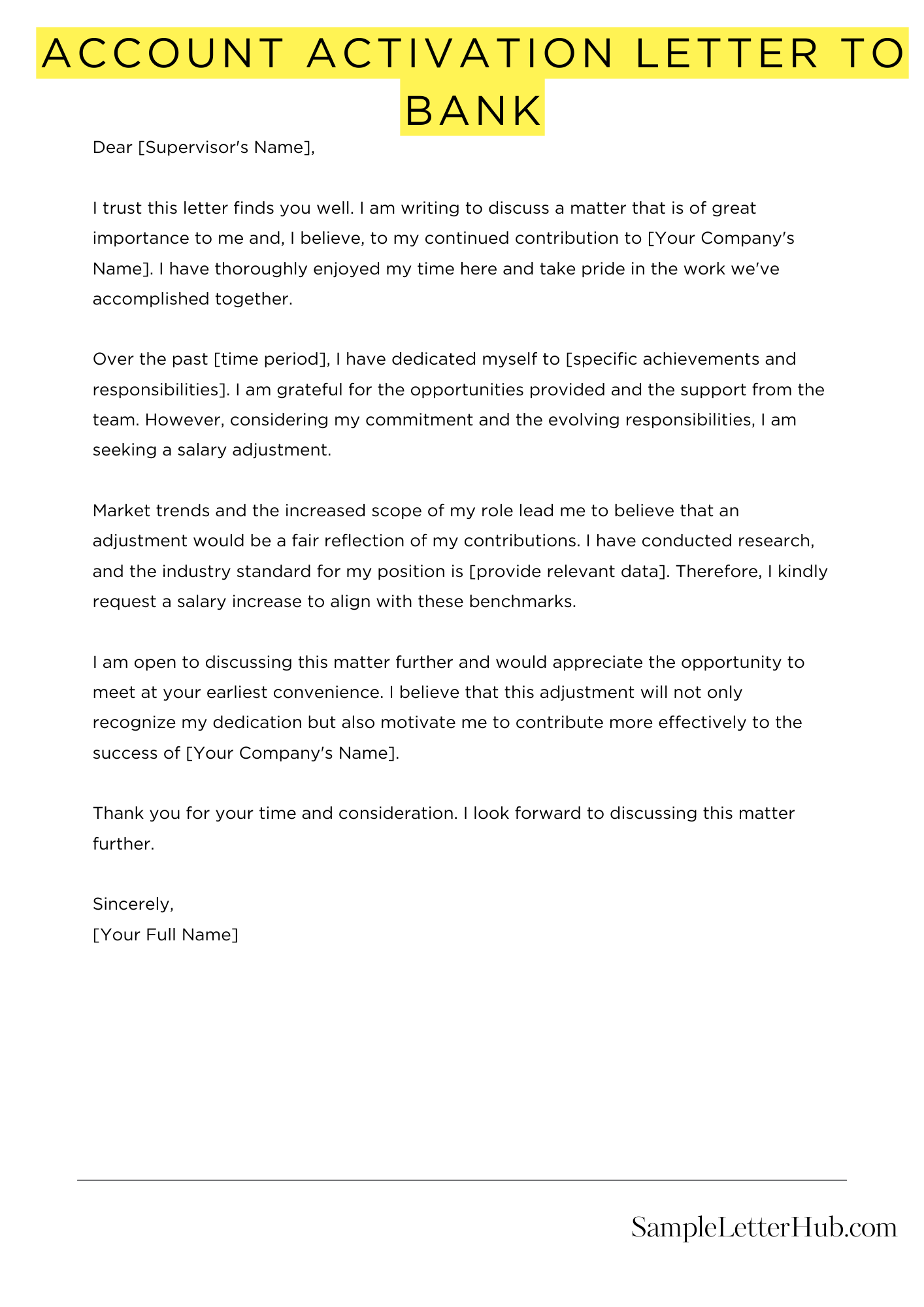An account activation letter to a bank is a formal letter written to the bank requesting the activation of a newly opened bank account. It is typically sent by the account holder to the bank after they have completed the account opening process.
In this article, we will provide you with templates, examples, and samples of account activation letters to a bank. These templates and samples will help you write a professional and effective letter to the bank. They are designed to make the process of writing an account activation letter easy and convenient for you.
Account Activation Letter To Bank
Dear Sir/Madam,
I am writing to request the activation of my new bank account, number [Account Number]. I opened the account on [Date of Account Opening] at your [Branch Name] branch.
I have enclosed copies of the following documents for your reference:
* Government-issued ID
* Proof of address
* Initial deposit slip
I understand that the account activation process may take some time. I would appreciate it if you could expedite the process as soon as possible.
Please let me know if there is any additional information or documentation required. I can be reached at the contact information provided above.
Thank you for your attention to this matter. I look forward to hearing from you soon.
Sincerely,
[Your Signature]

How to Write Account Activation Letter To Bank
1. Introduction
An account activation letter is a formal letter written to a bank to request the activation of a new bank account. This letter is typically written by the account holder and should include specific details about the account and the reason for the activation request.
2. Bank Details
Start the letter by clearly stating the name of the bank and the branch where the account was opened. Include the bank’s address and contact information for reference.
3. Account Information
Provide the account number, account type, and the date on which the account was opened. If you have received any account documents, mention their reference numbers as well.
4. Activation Request
State your request for account activation clearly. Explain that you have fulfilled all the necessary requirements for account opening and request the bank to activate the account at the earliest.
5. Supporting Documents
If you have any supporting documents, such as copies of identity documents or proof of address, mention them in the letter. State that you are enclosing these documents for the bank’s reference.
6. Contact Information
Provide your contact information, including your phone number and email address, so that the bank can reach you if they have any questions or require additional information.
7. Conclusion
End the letter by thanking the bank for their attention to your request. Express your hope that the account will be activated promptly and that you look forward to doing business with the bank.
FAQs about Account Activation Letter To Bank
What is an account activation letter?
An account activation letter is a formal letter sent by a bank to a customer to inform them that their new account has been created and is ready to use.
What information is typically included in an account activation letter?
An account activation letter typically includes the customer’s name, account number, account type, and instructions on how to activate the account.
How do I activate my account using an account activation letter?
To activate your account using an account activation letter, follow the instructions provided in the letter. This may involve visiting a bank branch, calling a customer service number, or following a link provided in the letter.
What should I do if I don’t receive an account activation letter?
If you don’t receive an account activation letter within a few days of opening your account, contact your bank to inquire about the status of your account.
What are some common reasons why an account may not be activated?
Some common reasons why an account may not be activated include:
- The bank is still processing your application.
- There is a problem with your identity verification.
- There is a hold on your account due to suspected fraud.

